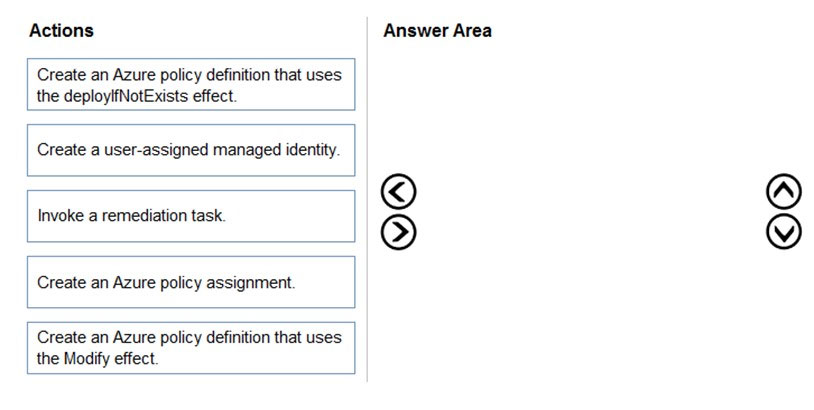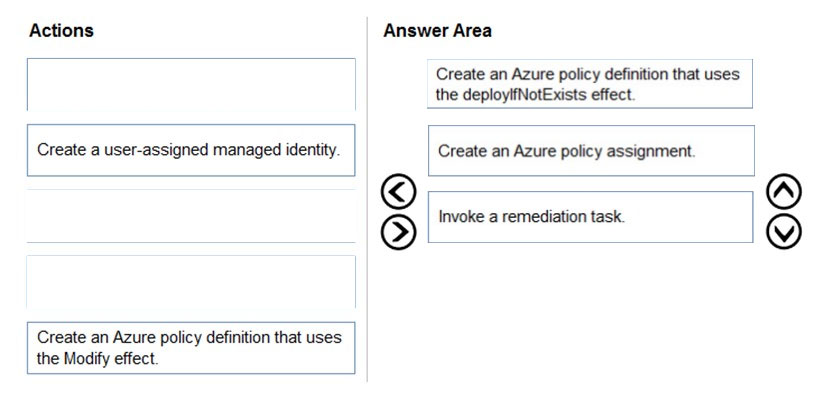

DRAG DROP -
You need to configure an Azure policy to ensure that the Azure SQL databases have TDE enabled. The solution must meet the security and compliance requirements.
Which three actions should you perform in sequence? To answer, move the appropriate actions from the list of actions to the answer area and arrange them in the correct order.
Select and Place:

nkv
Highly Voted 3 years, 7 months agopentium75
Highly Voted 3 years, 8 months agoMrClumsy
3 years, 3 months agoJayBee65
Most Recent 2 years, 10 months agoAberdeenAngus
2 years, 11 months agoAberdeenAngus
2 years, 9 months ago[Removed]
3 years, 4 months agobugimachi
3 years, 4 months agoMrClumsy
3 years, 3 months agosyu31svc
3 years, 7 months agojjdevine
3 years, 7 months ago